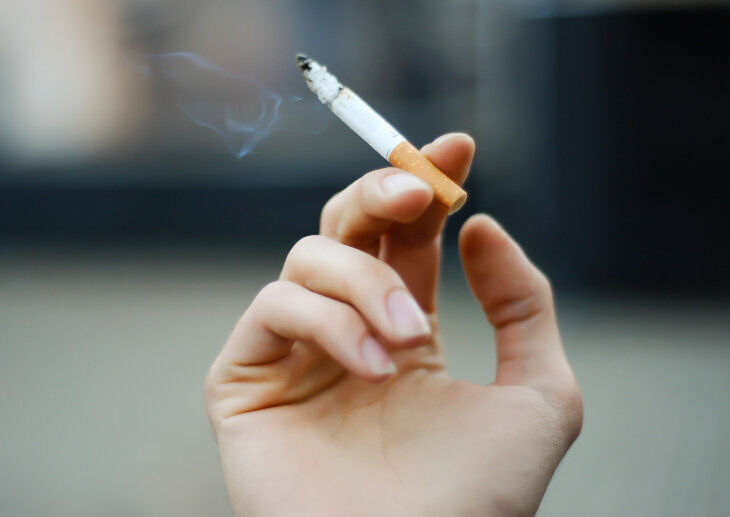The number of 8–15-year-old children trying cigarettes has fallen to 3% in 2022, compared to 19% in 1997, according to NHS England figures.
The Health Survey for England, which aims to estimate the number of people who have health conditions and the prevalence of risk factors, also found that the proportion of 8–15-year-olds who had ever drunk alcohol fell from 45% in 2003 to 14% in 2022.
However, around 12% of children aged 8-15 had tried e-cigarettes or a vaping device in 2022, compared to 9% in 2019.
It comes after the tobacco and vapes bill, which was making its way through parliament earlier this year, was pushed back following the announcement of a general election in July.
Prime Minister Rishi Sunak said at the time he was ‘disappointed’ the bill, which was due to ban young people from ever being able to smoke legally, would not go through before the shutdown of parliament.
The health survey is published in two parts, with the first focusing on health-related behaviours. It also looked at adult behaviours, and found that 13% reported smoking cigarettes in 2022, compared to 16% in 2019, with 9% reporting e-cigarette use, up from 6% in 2019.
Around 29% of adults ate five or more portions of fruit and vegetables a day, up from 28% in 2018. Whereas 7% ate none, which has been the case for the past 12 years, with the exception of 2018 where it rose to 8%.
Within alcohol consumption, 32% of men and 15% of women said they drank at levels that put them at increasing or higher risk of alcohol related harm, which was defined as 14 units over the past week. This compares to 30% and 15% respectively in 2019.
In response to the publication, Dr Layla McCay, director of policy at the NHS Confederation said: ‘While it is encouraging to see the continued fall in adults, children and young people who smoke and drink alcohol these figures do raise some concerns. The fact that a higher proportion of adults are drinking at increasing or higher risk levels and more children are vaping is something that health leaders will want to keep a close eye on.
‘There is frustration across the health and social care sector that plans to tackle these social determinants of health continue to be shelved or delayed. The Major Conditions Strategy which aimed to alleviate pressure on the NHS and increase healthy life expectancy by focusing on the principal lifestyle drivers of ill-health and disease, such as obesity and smoking, has been pushed back yet again due to the election and the Health Disparities White Paper that was due to be published in 2022 never saw the light of day. If it had published when it was promised, health leaders and their teams would have had two years to implement and drive improvements.’
On smoking and vaping, she added that the government ‘must recognise the influence ICSs can have’ in this area.
‘If we are going to tackle the key drivers of ill health and health disparities, health leaders and their teams will need the right support and resources from the next government. That is why we are calling on the next government to lead a cross-government national mission for health improvement,’ she said.
Earlier this year, nearly 400,000 vape kits were set to be sent to smokers in England under the Government’s swap-to-shop scheme.




